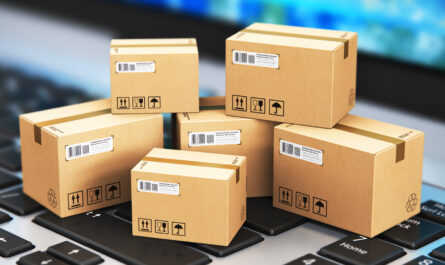Organizing Paperwork Digitally
One of the main benefits of converting paper documents to a digital format is having all your important files organized in one centralized place. By scanning physical documents and saving them as electronic files on your computer or cloud storage, you can access them from anywhere without the risk of losing or misfiling paper copies. Some key things to focus on when digitizing your paperwork include:
File Naming Conventions
For each scanned Converting Paper document, create a descriptive yet concise file name so you can easily locate what you’re looking for later on. Include the document type or category along with a date if applicable. For example, it’s better to name a file “utility bill May 2021” rather than just “scan 124”. Be consistent with your naming structure to keep files well organized.
Organize By Category
Once documents are scanned, group them into clear-cut electronic folders based on category or topic. Common folders could be for bills and statements, tax documents, medical records, contracts or agreements, and more. Organizing up front saves a lot of time spent searching later on.
Back Up Your Work
Make sure to back up your digitized documents on an external hard drive or cloud storage service in case your primary computer crashes or is damaged. Losing all your organized paperwork because a single device failed would defeat the purpose of digitizing in the first place. Multiple backup copies are ideal for added security and accessibility.
Editing Scanned Documents
Occasionally scanned paper documents may need light editing to improve quality and readability. Here are a few editing tips:
– Rotate skewed text using image editing software if pages were scanned at an angle.
– Crop out any excess blank margins around scan edges for a cleaner appearance.
– Adjust brightness and contrast if text appears too light or dark to read easily on screen.
– Despeckle to remove any stray dots or marks left by the scanning process.
– Use OCR (optical character recognition) software to convert scanned text into editable word processing files if needed for copying or editing content.
Digitizing Financial Records
An important category of paperwork to digitize is your financial records. Having bills, receipts, tax documents and bank or investment statements electronically organized makes it easier to:
– Find information quickly like mortgage details or insurance policy numbers when needed.
– Review monthly spending habits by category over time for budgeting purposes.
– Prepare taxes by having all necessary forms and income records in one digital file cabinet.
– Manage accounts online more conveniently without needing to dig through paper files.
The scanning process for financial records is generally the same as other documents – categorize, name files descriptively, and back up digital copies. However, take extra care to securely store any pages containing sensitive information like credit card or Social Security numbers.
Converting Medical Documents with Converting Paper
Medical records are another essential type of paperwork to transition to electronic storage. Benefits of digitizing files from doctors, dentists, hospitals and more include:
– Having a complete medical history in an easy-to-share format during emergencies or doctor visits.
– Reducing paperwork when changing providers by transferring files digitally.
– Organizing immunization records, test results, and treatment plans in one digital patient portfolio.
– Accessing past provider notes, referrals or prescriptions from any device if you misplace a physical copy.
When scanning medical files, take extra measures to password protect digital copies or store them on an encrypted external hard drive or cloud service. Redact any parts containing confidential personal info like dates of birth or social security numbers.
Scanning Large Volumes of Converting Paper
Some paper collections like an entire home filing cabinet worth of documents can seem daunting to digitize all at once. To make the process more manageable:
– Set clear scanning sessions with a page limit rather than trying to do it all in one lengthy sitting which leads to fatigue.
– Scan and organize files in batches, focusing on one category or topic area at a time rather than randomly.
– Work in a well-lit space and use an auto document feeder scanner if available to scan multiple pages quickly without interrupting your workflow.
– Take breaks periodically and stand up to avoid eyestrain from prolonged computer use.
– Play some upbeat music to keep your energy and focus level high during scanning sessions.
By breaking a large digitizing project into smaller, bite-sized tasks and using helpful tools, any substantial pile of paper piles can be smoothly converted into organized digital archives.
Revisiting and Maintaining Digital Files
Lastly, set reminders to periodically revisit your digital document collections and collections. Just as paper files can get unorganized over time, electronic folders may need periodic organizing, renaming or transferring to new storage locations as well. Make it part of your regular workflow to:
– Review naming and categorization to keep information searchable and tidy.
– Update folders moved for restructuring purposes.
– Purge obsolete files and backups to prevent bloating storage space.
– Transfer files to new media like replacing external drives or cloud storage services.
Ongoing curation keeps converting paper systems working just as efficiently as starting fresh. Small maintenance sessions are easier to fit into schedules than large-scale digitizing all over again if files get too disorganized.
Following these steps will help make the process of converting your paper documents to searchable digital files go smoothly while keeping all important information well organized for future access. Let me know if you
*Note:
1. Source: Coherent Market Insights, Public sources, Desk research
2. We have leveraged AI tools to mine information and compile it.




